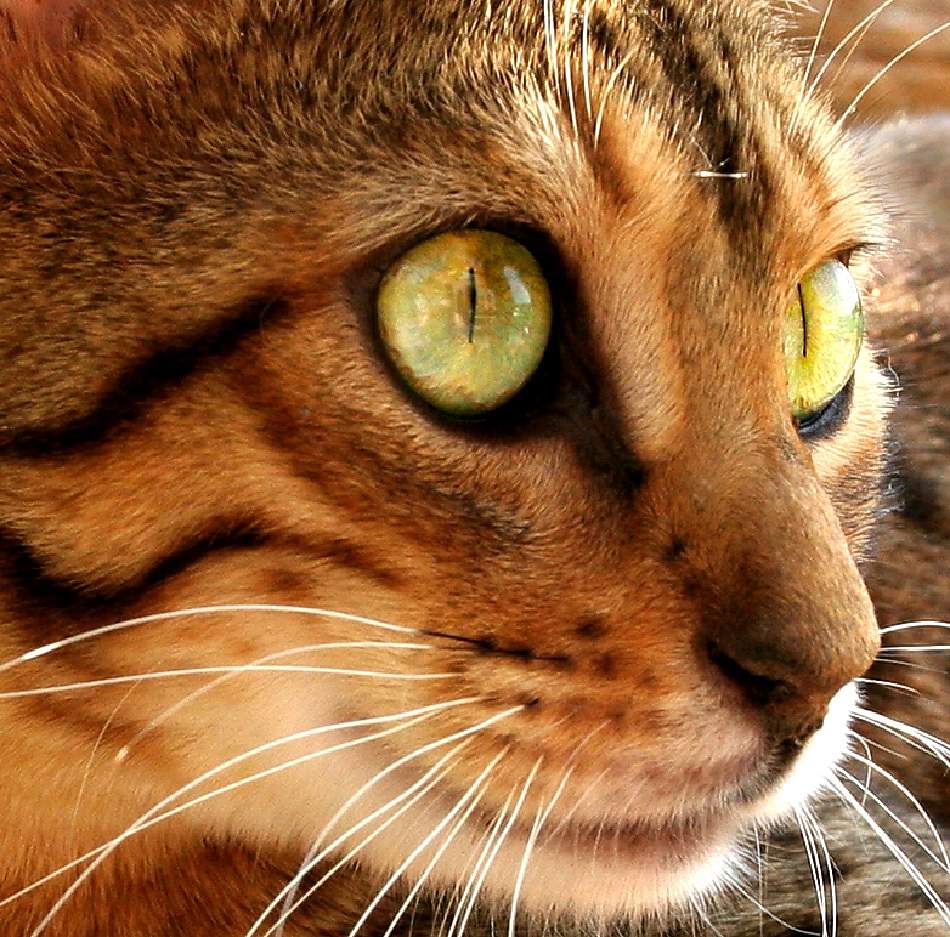cat Facts
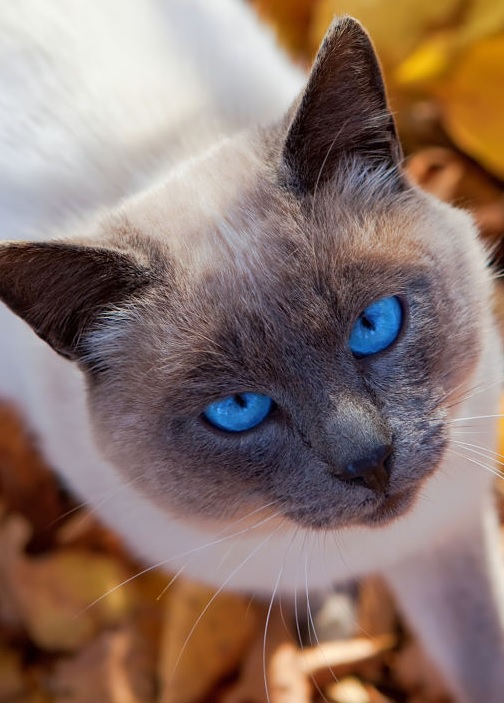 Portrait of a Cat
Portrait of a CatUndoubtedly the coolest of all cat facts, is that cats don't usually "meow" at other cats, just at humans! The charming and beautiful domestic cat is one of the world's most common creatures, found in every corner of the planet, in numbers too vast to calculate.
They share a common ancestor with the African lion, and their fossilized and sometimes even mummified remains can be found entombed alongside Kings and Pharaohs. But despite being ever present and all around us, even sharing our beds, they remain mysterious.
Once thought to have been domesticated in Egypt about 4,000 years ago, it is now believed that cats were an important part of human life for more than twice that time. In 2015 when the remains of a human being and a cat were found buried together in the Mediterranean island of Cyprus, they were dated at 9,500 years old.
There are currently about 38 different species in the felid or cat family, from the magnificent 400 pound Siberian tiger, to the tiny Rusty spotted cat, an Asian species which, at just 2 or 3 pounds, is the world's tiniest feline.
The domestic cat is usually between 6 and 20 pounds in weight, and their are approximately 45 different cat breeds recognized today, from the tiny Singapura to the massive Maine Coon cat.
Cats are incredibly skilled hunters, and tend to be most active at dawn and dusk, when small birds and little rodents are out and about. No degree of pampering or softening of lifestyle dulls the skill, and having a belly full of moist canned food, possibly thoughtfully warmed up in the microwave, does not interfere with the cats prey drive. If they are allowed access to the outdoors, most pet cats will hunt, or at least actively stalk small prey.
Cats are also notoriously bold, and have been seen taking on animals 10 or 20 times their size. Even young kittens have been observed chasing off very large dogs, with the classic cat threat display.
Cats will stand up and walk on their hind legs, their front limbs spread out stiffly, claws unfurled, and wave their upper bodies around as they growl. They can appear nearly twice their size by setting every hair on their bodies on end with the help of hundreds of tiny muscles under the skin. They will arch their backs, snarl, hiss and spit in an attempt to confuse and disorient. But the fearsome display is never just a bluff, as the brave little cat will take on cougars, wolves and bears if need be, leaping right on top and scratching and biting relentlessly. House cats often loose in confrontations with larger predators, and will avoid most fights by scooting up a tree, but there are many video-cam examples of their bravery across the internet, and yes, bears will turn and flee from particularly fearless kitty cats.
Their bravery also extends to a resilient drive for life. Cats have survived being thrown out car windows, locked in cargo containers, and escaping burning buildings. Physical toughness has led to the saying that "a cat has nine lives", but instinct plays a part in their survival as well. After all, there was a cat named Jenny who was a mascot on the Titanic, and even had a litter of kittens while on board. Legend has it she carried her kittens off the ill-fated boat one by one, right before it embarked on its last voyage.
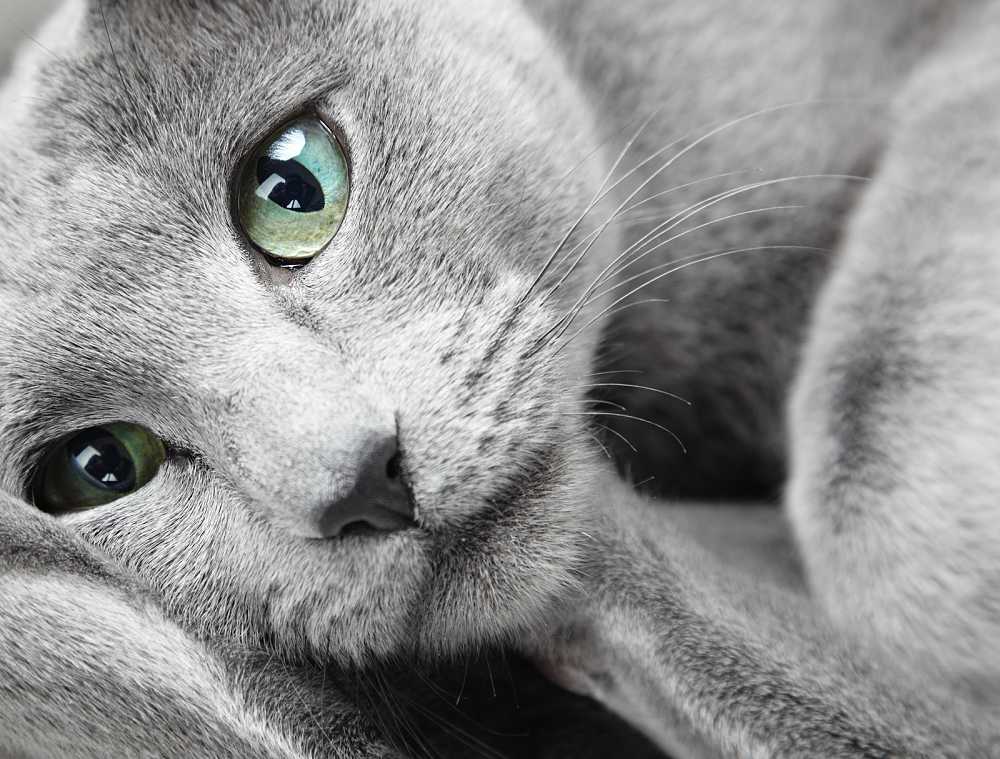 Russian Blue Cat
Russian Blue CatThe cat is one of the most polarizing animals, inciting dread and disgust as equally as adoration and envy.
In ancient Egypt, cats were revered members of the family, and are depicted on wall murals playing underneath the diner table. If the family cat passed away, the entire family would shave their eyebrows in mourning. The cat goddess Bastet was worshiped in temples, and cats were mummified and buried with their owners.
Maneki-neko, the "beckoning cat", is a symbol of good luck and prosperity in Japanese culture, and statues of the famous calico are displayed in businesses and homes to summon wealth.
But in stories of black magic and witchcraft, the cat is an agent of darkness, and a companion to the witch, known as a "familiar". Familiars were usually thought to be tabby cats which were striped like tigers, not black cats, and some were even burned at the stake.
A horrible activity known as cat-burning was once seen as a form of entertainment in 16th century France. Kings, noblemen and even Louis XIV was said to have set fire to a hanging wicker basket full of cats, while a crowd cheered. These rituals were usually followed by a banquet.
Some seek concrete reasons for being cat-haters, like pointing to the cats tendency to play with their prey as a sign of evil, along with their glowing eyes, and sneaky, night-time activities, but the love for cats is plain, as none can argue the recent rise of the cat as an internet darling, being declared the world's most viewed animal.
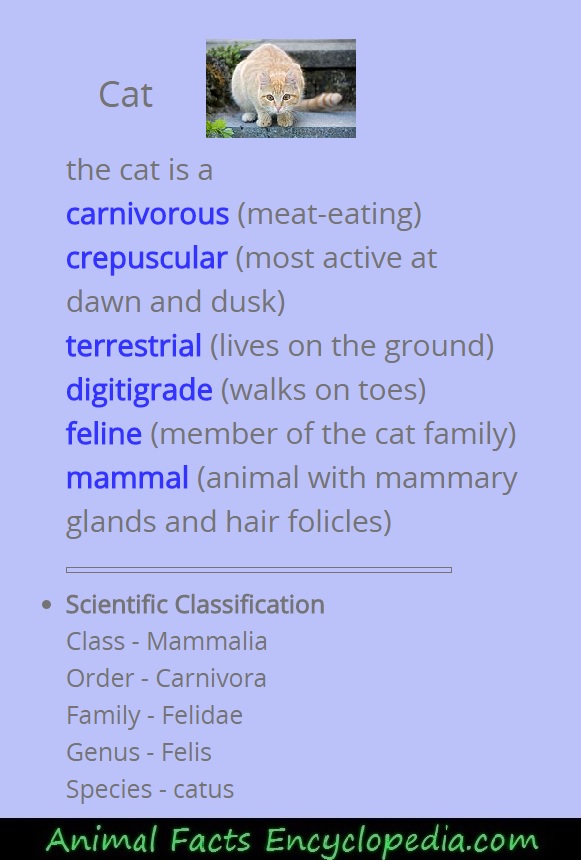
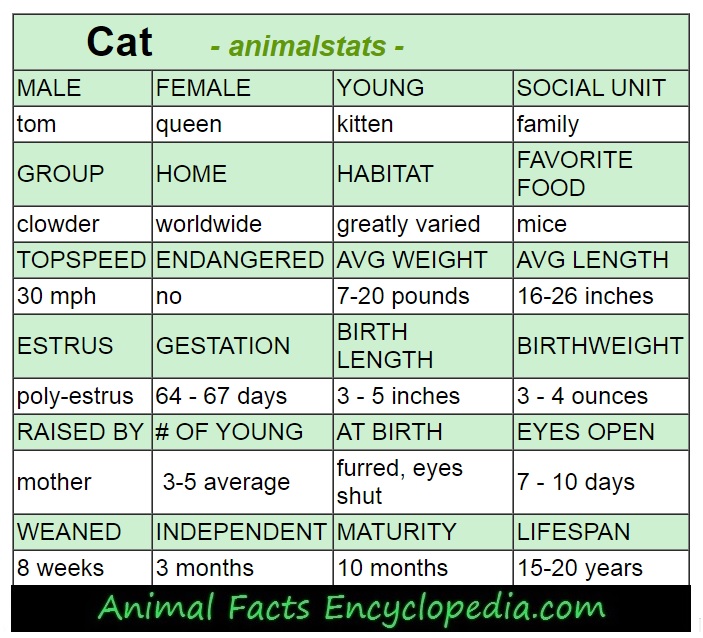
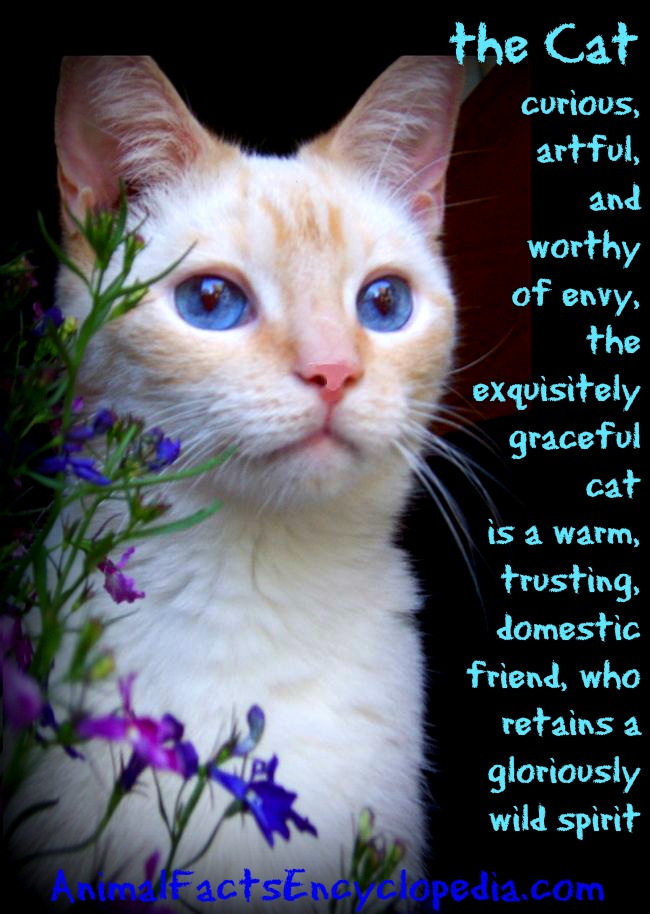
Are cats really domesticated?
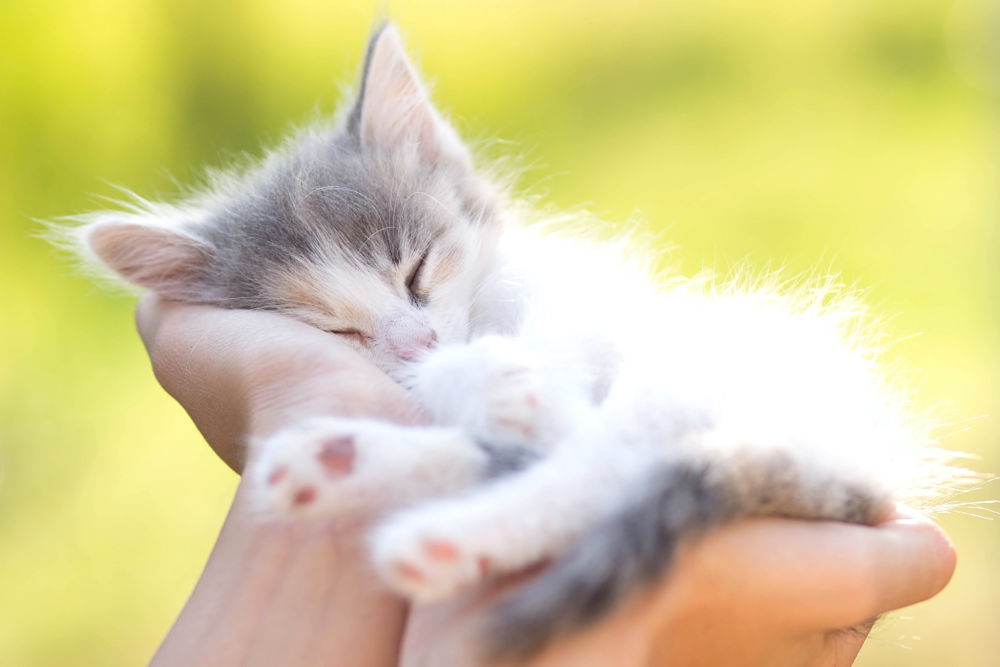
Cats were once thought to have been domesticated about 4,000 years ago in Egypt, but some new evidence suggests they were a part of our lives as long ago as 9,500 years. So the dates have been moved back, but the question remains, are cats really domesticated?
The cat was domesticated from African wild cats in a process that began when human beings formed settlements and began farming. Grain was stored in barns and silos in large quantities attracting hordes of rats, mice and other vermin. The wild cats controlled the rat population, and were rewarded with additional meals, shelter, and eventually affection.
But, unlike the dog, which was domesticated some 40,000 years ago and is now significantly different both physically and psychologically from its closest wild relatives, the domestic cat has changed very little through its 9,500 year-old partnership with people. In fact, many domestic cats look almost identical to the wildcats that still roam Africa and Europe.
Most retain their incredible hunting skills and are largely nocturnal. Even coddled pets if they have access to the outdoors display very similar territorial and social activity as other wild feline species, and disappear into that secret world right after they leave our doorstep.
They are neater, less contentious and far more social than wildcats, even developing a specific call just for communicating with human beings - the classic "meow", but most are still completely capable of life without any human intervention.
In fact, the domestic cat can revert back to a wild form known as a feral cat, within a single generation of returning to the wild.
The dictionary states "a domestic animal is one that has been tamed and kept by humans as a work animal, food source, or pet, especially a member of those species that have, through selective breeding, become notably different from their wild ancestors."
In our opinion, the cat is most definitely a domestic animal, for 2 specific reasons. First, it has added a call to its vocabulary specifically to appeal to us - (cats generally only "meow" at humans).
Second, the ease with which house cats share the birth of their offspring with us, allowing humans to assist in labor and handle newborns without any increase in stress level.
When you read the dictionary explanation, though, the use of the word "notably" may be what leaves the question still up for discussion...
cat lifestyle
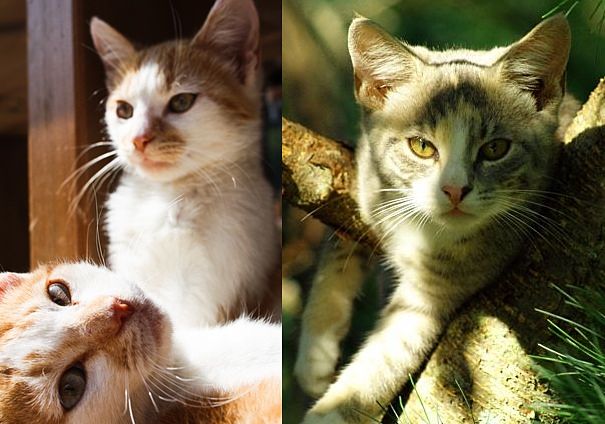 cats chillin'
cats chillin'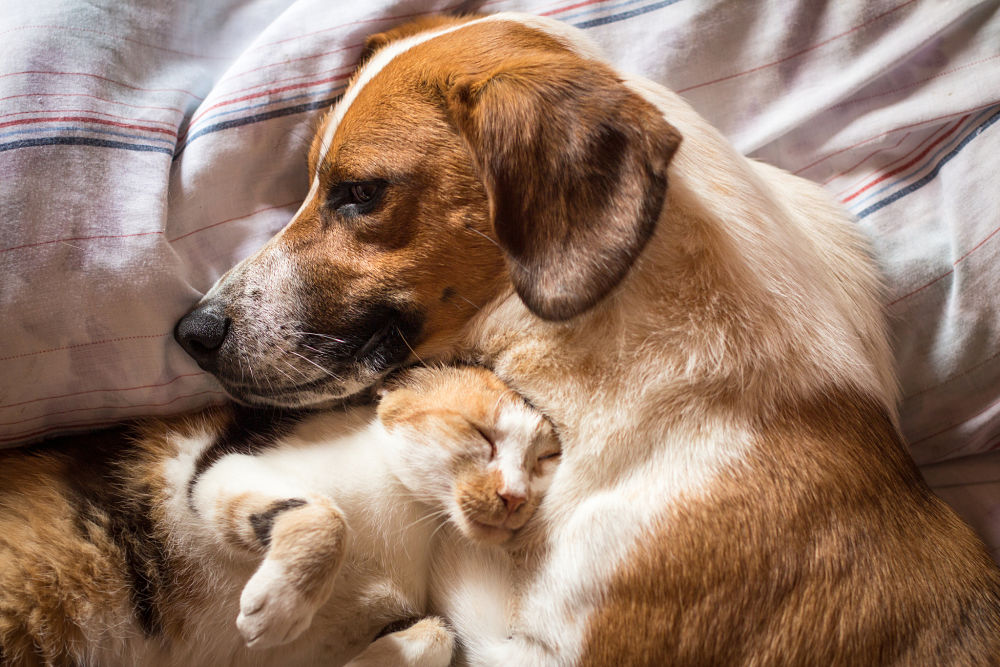 mortal enemies
mortal enemiesThe cat is one of the worlds most excellent hunters, with each component of its body designed to support that function. Cats are muscular, compact and sinewy, and they are almost exclusively carnivorous in the wild, your carrot-loving kitty not withstanding. They will hunt anything that they can physically overpower, sometimes taking down animals, like jack rabbits and ground hogs, that are nearly twice their size.
Their favorite prey are small birds and mice, which they sometimes trap between their claws, and toy with for awhile before actually killing. Cats will also occasionally bring prey back to the house as a sort of present. These gifts may be dead or alive, and sometimes arrive completely unharmed, as a testament to the cats amazing precision and skill.
They have excellent night vision, and their long whiskers and eyebrows allow them to feel their surroundings in the dark, and also sense vibrations and even sounds.
The cats hearing is so strong it can recognize sounds that are both too high and too low for humans to hear. This comes in handy because many of the rodents they enjoy hunting, also make very high-pitched noises.
They have long, sharp teeth, and razor sharp claws that retract like little switchblades. The claws retract to prevent them from dulling, and to allow them to sneak up on prey. Mainly a tool for hunting, the claws are used in climbing as well.
Cats don't live in trees, and they rarely hunt in them, but they can climb them quickly, particularly when escaping from a larger predator, namely a dog or a wolf. The cats claws are angled and curved in such a way that they can easily climb straight up the trunk of a tree, but once up in a branch, the backward-curling claws make it difficult to get down. Most cats figure out that backing down is the safest way, but some will literally be stuck up a tree for days. If they fall out, another of their physical gifts clicks in, the ability to right themselves in mid air.
Yes, cats almost always land on their feet, do to incredible balance, and an advanced sense of proprioception, or body awareness. The moment they begin to fall they twist their head around to the correct orientation to the ground, the shoulders, forelimbs, torso, and hips follow, and within a split second the cat is right side up and landing on its feet. Cats have even survived falls from five story buildings with this remarkable gift.
Yet for all their killer hardware, the cat regularly overcomes its powerful instincts to retain a peaceful household. Cats and dogs get along all the time, mainly because their centuries of living in domestication gives them the ability to suppress wild urges, or has removed some impulses all together. And cats have made friends of all nature of potential prey, including rats, mice and parakeets. Some well behaved buddies of household hamsters actually continue to hunt on their outdoor jaunts, somehow separating in their minds, friend rat and foe rat - Fascinating!
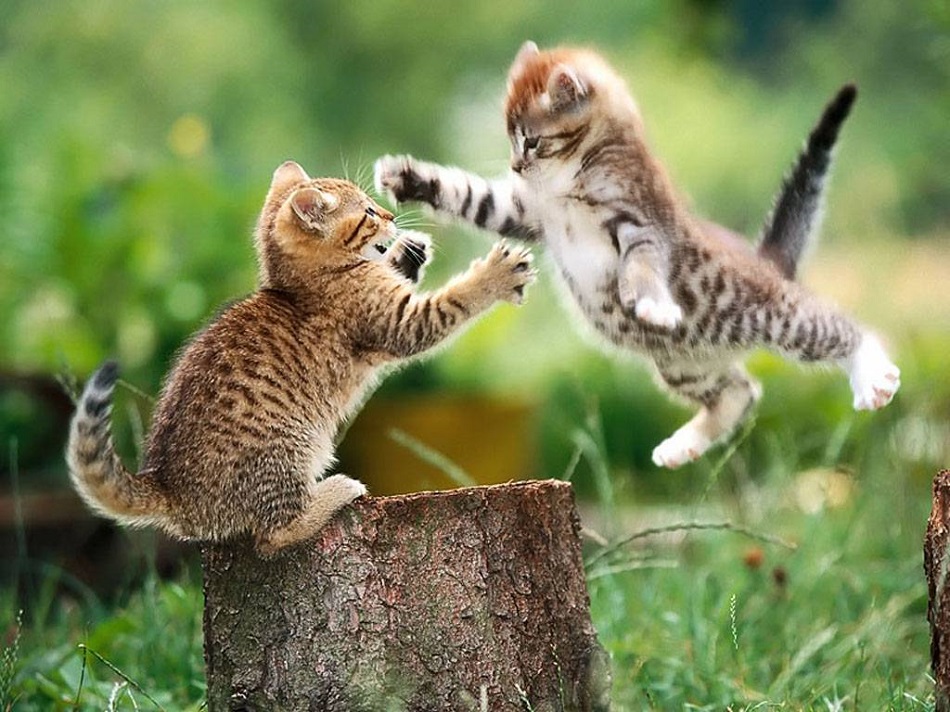 flying kittens
flying kittenscat facts on reproduction
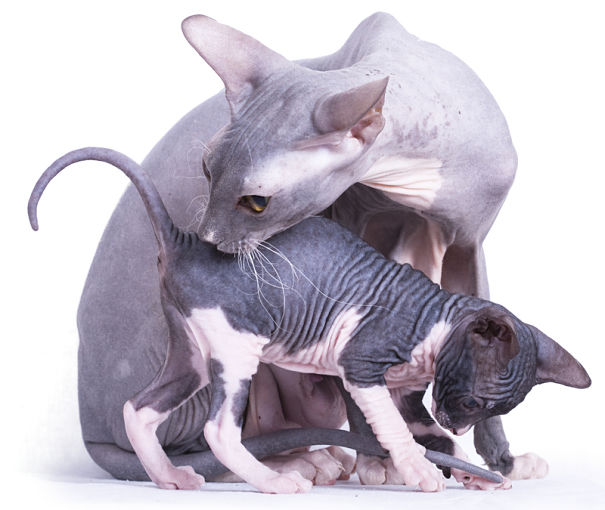 Sphynx cat mother and kitten
Sphynx cat mother and kittenCats are poly-estrus and may come into heat a few times a year if not impregnated. Males from the neighborhood may fill the yard of a female in heat, rawling and calling back and forth to her, and fighting among themselves. Fights over females are rarely serious.
She may mate with several males, and if she does, she may have a litter of kittens who actually have different fathers.
The pregnancy lasts about 65 days, and usually results in 3 to 5 kittens, although as many as 10 is possible. Kittens are born with fur, but their eyes and ears are closed. Ears open within a day or 2, eyes open between 7 and 10 days. Newborns must drink milk within a few hours of birth in order to receive antibodies that are in the colostrum.
Mother cats are very affectionate and patient. As the kittens grow, she will teach them to stalk and hunt. If she has access to the outdoors, she will even bring live mice for the kittens to pursue.
Kittens are weaned sometime between 6 and 8 weeks. They usually set off on their own by 5 months and are sexually mature at about 9 months.
Cats were once thought to be very solitary animals, but research with GPS collars showed that house cats let out to roam had numerous friends and acquaintances in the neighborhood. They often spent time closely assembled, sometimes in groups of several cats, and occasionally engaged in play or mutual grooming.
Cats are solitary hunters though, and didn't appear to have very close bonds within the little community.
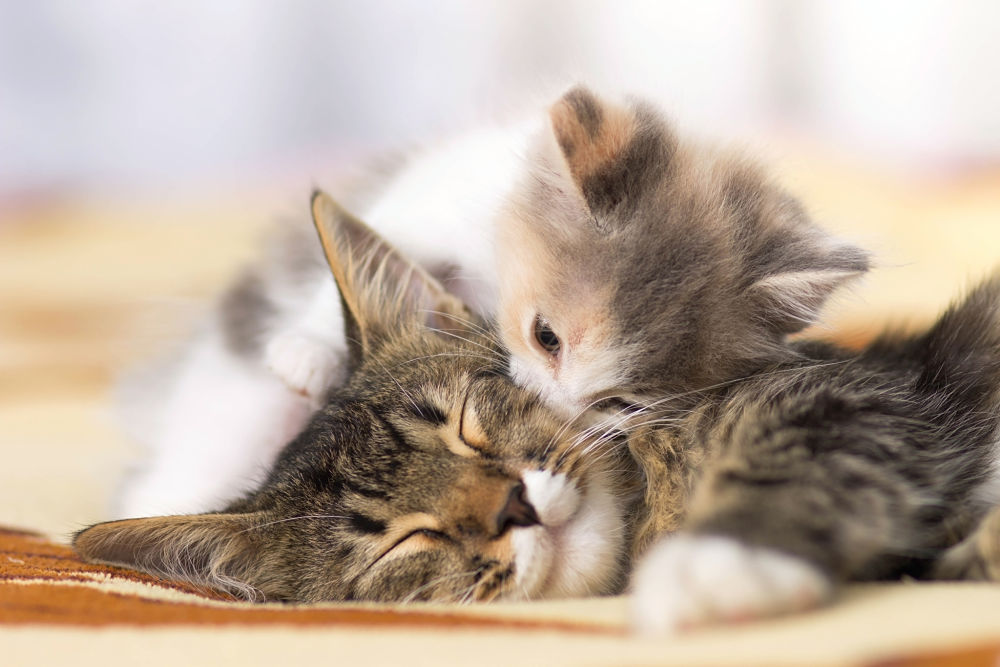 Maine Coon Cat mother and baby
Maine Coon Cat mother and babydiversity in cat breeds
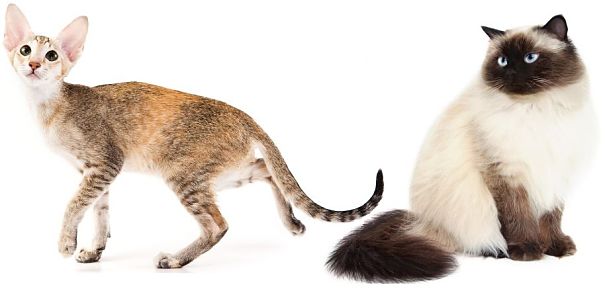
 Persian, Devon Rex, Exotic Shorthair, Cornish Rex
Persian, Devon Rex, Exotic Shorthair, Cornish RexThe domestic cat has been transformed, through human imagination, into an amazing assortment of different creatures. Worldwide there are perhaps 40 to 60 different breeds of cat, recognized by one organization or another. They vary in terms of size, body shape, color, coat type and skull shape.
The shape of the head can be long like a greyhound, which you see in breeds like the Cornish Rex, the Modern Siamese, and the Oriental Shorthair. Short-nosed or brachycephalic breeds include Persians, Exotic Shorthairs and the Himalayan. The Devon Rex and the Sphynx cat have big wide ears and delicate muzzles that give them a bit of an E.T look.
Coat types can be long and silky like a Turkish Angora, short and plush like a British Shorthair, curly like the Rex breeds, or different degrees of hairless like the Donsky, the Spynx and the Peterbald.
Sizes range from 3 or 4 pound teacup Munchkins to huge, pointy eared 30 pound Maine Coon cats.
Tails can be long and whip-like in the Abyssinian, stumpy like the Kurilian Bobtail, or missing alltogether like the Manx. And ears can fold over forward like the Scottish Fold, or curl backwards like the American Curl.
Some of these differences were the result of careful breeding, but most, like the Munchkins short legs, were simply spontaneous mutations that people thought were cool.
 Peterbald, Siberian, Bombay, Savannah, Angora, British Shorthair, American Curl, Devon Rex, Persian
Peterbald, Siberian, Bombay, Savannah, Angora, British Shorthair, American Curl, Devon Rex, Persian Chinchilla, British Shorthair, Persian
Chinchilla, British Shorthair, Persiando cats love us?
Most folks who have cats in their lives will answer yes to that question, and recent scientific studies have actually collected data that backs it up.
A cats brain actually reacts the same way chemically when it sees its owner, as the human brain does when looking at a child, a loved one, or their cat.
The love hormone oxytocin, which is released in particularly large amounts when we first fall in love, increased in cats brains after interaction with their owners by an average of 12%. So - proof cats love us!
Of course in the same experiment they tested a bunch of dogs too, wouldn't you know, and the ocytocin in the dogs brains increased over 50% - now that's a little much..
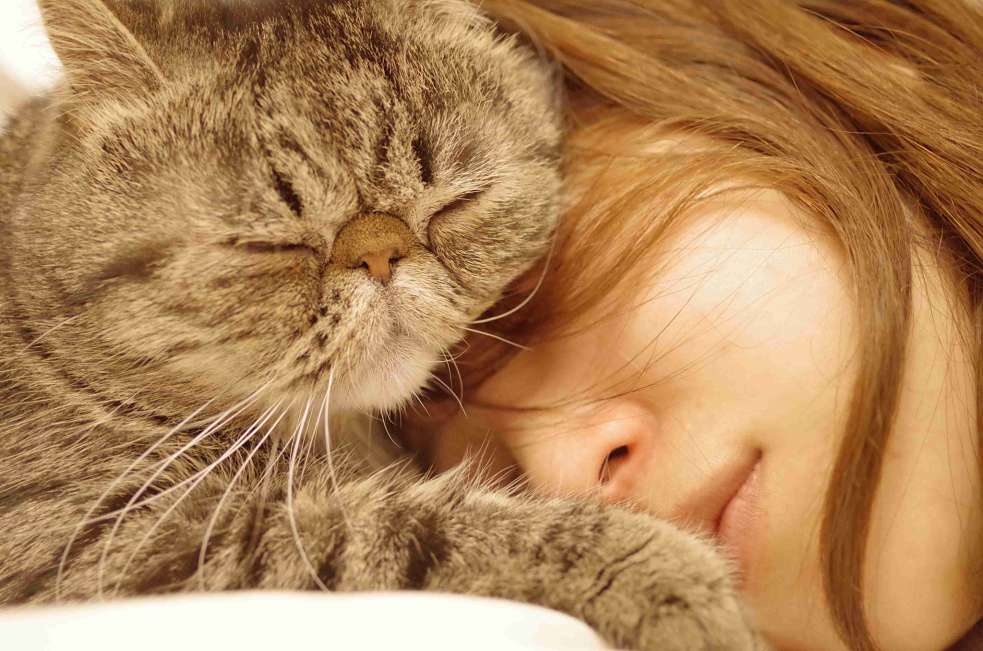 Exotic Shorthair loves her mommy
Exotic Shorthair loves her mommy
a few more cat facts
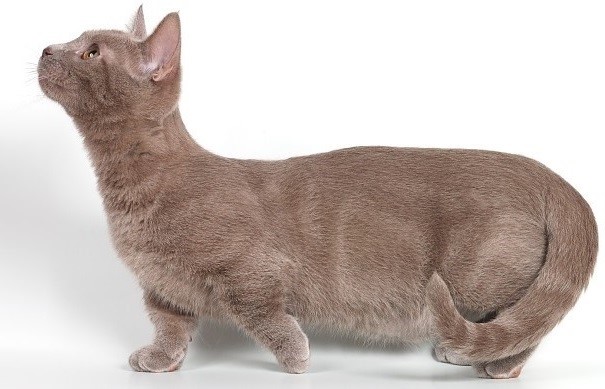 Munchkin Cat
Munchkin Cat- 99% of all calico cats are female due to a recessive gene
- The oldest cat on record was "Creme Puff" who lived 38 years!
- The top two rows of a cats whiskers moved independently of the bottom twp
- During the life of an average cat 10,00 hours are spent purring
- Cats sleep about 16 hours a day
- There are about 500 million pet cats in the world
- Cats spend 30% of their waking hours grooming
- Ancient Egyptians shaved their eyebrows when mourning a departed cat
Scientific Classification:
| Cat - animalstats - | |||
|---|---|---|---|
| MALE | FEMALE | YOUNG | SOCIAL UNIT |
| tom | queen | kitten | family |
| GROUP | HOME | HABITAT | FAVORITE FOOD |
| clowder | worldwide | greatly varied | mice |
| TOPSPEED | ENDANGERED | AVG WEIGHT | AVG LENGTH |
| 30 mph | no | 7-20 pounds | 16-26 inches |
| ESTRUS | GESTATION | BIRTH LENGTH | BIRTHWEIGHT |
| poly-estrus | 64 - 67 days | 3 - 5 inches | 3 - 4 ounces |
| RAISED BY | # OF YOUNG | AT BIRTH | EYES OPEN |
| mother | 3-5 average | furred, eyes shut | 7 - 10 days |
| WEANED | INDEPENDENT | MATURITY | LIFESPAN |
| 8 weeks | 3 months | 10 months | 15-20 years |
see more animal extreme closeups
Recent Articles
-
African Animals - Animal Facts Encyclopedia
Oct 11, 16 10:27 PM
African Animals facts photos and videos..Africa is a wonderland for animal lovers, and a schoolroom for anyone who wants to learn about nature, beauty and the rhythm of life -
Baboon Facts - Animal Facts Encyclopedia
Oct 11, 16 10:26 PM
Baboon facts, photos, videos and information - Baboons are very distinctive looking monkeys with long, dog-like snouts and close set eyes. -
Great Apes Facts - Animal Facts Encyclopedia
Oct 11, 16 10:25 PM
Great apes facts, photos and videos..Human beings did not evolve from chimpanzees, modern chimps and gorillas do not appear in the fossil records until much more recently than homo sapiens..




















